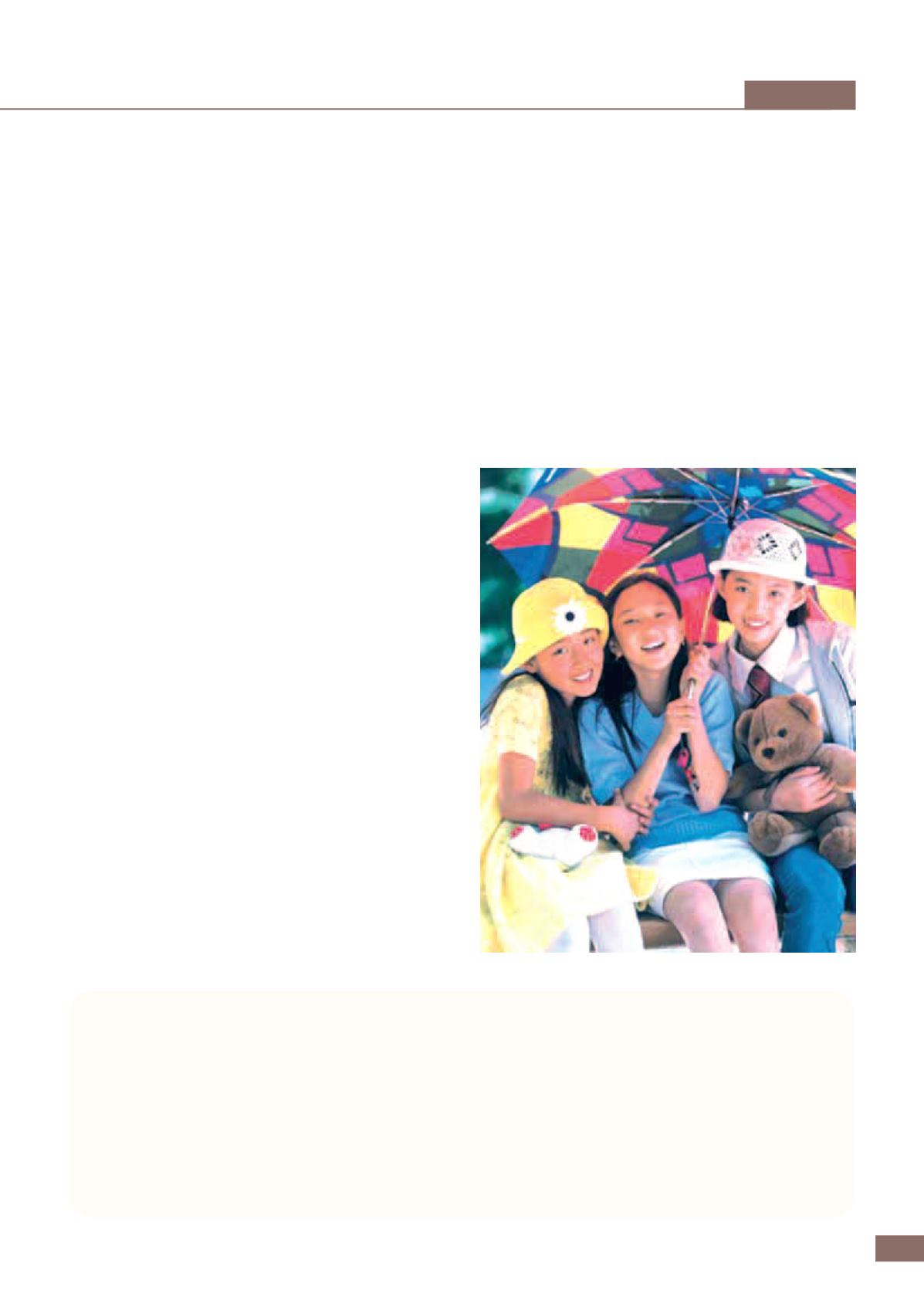
73
ၝΥజኬ
ٙ᎘ၫdଣึəவ
܀ࡈ
ɿٙᑘਗ
ה
ᘾᔛٙlzίႧԊf
ॆٙλփdҢ௰
ڐ
ձ˼࿁ൖࣛٙ༓।ٙग़ʔԈ
ədᛃᛃٙబܿٙᄘԉɰᜊʾλəf՟Ͼ˾ʘٙ
݊ɓᕐబϞ௴จٙึႭ༑ٙຒf
ҢɦɓϣฮɨӔːjҢɓ֛
ࠅ
ᘱᚃᛘᏑ˼dԨᏍп˼
͜ᄘˋႭ̈˼lzːٙ
ߕ
Ѷซ
ج
dԨɢӋί˼ঐɢϞ
ࠢeೌ
༺ڌج
ٙࣛ
ࡉ
͜Ңᔮబٙซ྅ɢၾ˼ɓৎชա
ႧԊٙቾɢdϾʺ˼ٙซ྅௴ிጳሳf
¨܀ɿϞɓϵ၇ႧԊ©
൙ؓj¨Λᆄ©ԃଣׂॆଣήᙕ
ࠑ
༸j¨܀ɿϞɓ
ϵ၇ႧԊ©fՉଉՍٙў່ίj܀ɿᒱ್ʔঐ྅ϓɛ
ɓᅵॱᆞٙႧԊdШ܀ɿ
༺ڌ
Іʉʿ࿁˰
ޢ
ٙႩ
ᗆ
ۍ
݊ዹतٙdεᅵٙf
ஷཀᛘนนٙग़ձᑘਗdᜫҢଉଉήࢻ̈jЪ
މ
ϼ
ࢪҢ
ࠅࡁ
ீཀІʉٙᑊࠪeႧሜԸ๖ஷdᜫ܀ɿ
ࡁ
ٝ
༸Ы࿁˼
הࡁ
ՈϞబ௴ிٙlzίႧԊձঐɢd݊εჿ
Ϟ
ڦ
ːdϾ˲
މ
˼ชՑᜓఃձᛨශlᜫ˼
ࡁ
᜕Ցձ
Ыɓৎীሞ˼
ࡁ
ٙซ
ج
݊Оഃٙጳኧf
ၾ܀ɿ๖ஷձʹ
ݴ
ٙ
ۃ
༆ᛘ܀ɿٙႧԊ݊ၾ܀ɿ๖ஷձʹ
ݴ
ٙ
ۃ
dϼࢪd
तй̼݊ຯٙϼࢪ͟܀ɿϋᙧतᓃeႩٝ˥e
ձӊЗ܀ɿٙʔΝतሯഃΪ९dһᏐ͜Іʉٙช֜e
ฌːeձᑋʑ౽ชաӊЗ܀ɿlzί௰ଉՍ௰ᔮబٙ
ႧԊd௰ɽࠢ
ܓ
ήʺ೯࢝˼
ࡁ
˙ࠦঐɢٙ˥f
Ңฮซdԟϣ၊ʕ೯ତ౹ၩಗeዓຟ˪e
إ
ν
؈
ᜫҢࠠԸཀٙ༑dҢఱʔึ͜੭ᘌഠٙ༑Ⴇf
Ңึ༧นนፋʲήႭj¨Ңٝ༸นน
੬ڢ
ᄒdঐҪ˂
ɪٙථϢ౹ၩಗሗԸdۘl݊ซਂɓ৳ϼd৷৷
ήίᔝ˂༁࠭ыdࡴdนน࠭ќ࠭ќd࠭ଢ଼ədွᙂ
əλk©i
א
Ⴍj¨Ы݊ίྷʃᕒ౹ၩಗkќl
ːᏀՑЫٙᘒᘒdԸွɓᙂdᜫஐᘒᘒՑࣙᗙ̘;
ࢹdഃɓึՅΎྷλk©nnfঐซ྅̈Ңձ˼ٙ௴
จɚΥ
މ
ɓٙࣛ
ࡉ
˼ɓ֛ึ੭ഹᙚήආɝྫྷซ
ٙf
ء
j༓।ܸɓԬˢ༰
ݺ
ᆌዚᜳٙ܀ɿίБਗe࿒
ܓ
ഃ
˙ࠦᒯ।ʔ࣍f
READING OF KAI KAI’s MYSTERIOUS EXPRESSION
As a new Grade 5 pupil, Kai Kai has unique expressions. He liked to be alone but not very submissive. He is also a collector,
e.g., of leaves or small pieces of paper flying around, or even cotton wool. His habit was to stack up and build his own toys out
of drinking straws and other tube-like structures. One day, he went quietly into the bathroom and started a game of “planting
trees” with tubes and plasticin; he also “watered” the “tree” by turning on the tap. I encouraged such acts of loving care. He then
played “boat sailing” – with a piece of building block – yelling, “out to sea” “catching fish”; his imagination and association
contribute to his potential for research – his body language and his eye expressions revealed his thinking, despite his rudimentary
language skills. According to the Reggio Approach for education concepts, “Kids have 100 kinds of languages”. Kids have a
unique, multiplex of expressions. As reading their language is a prerequisite for communication, their teachers should make use
of their own feeling, loving care and intelligence to read every kid’s inner and rich minds so that their talents may be enhanced
fully.


